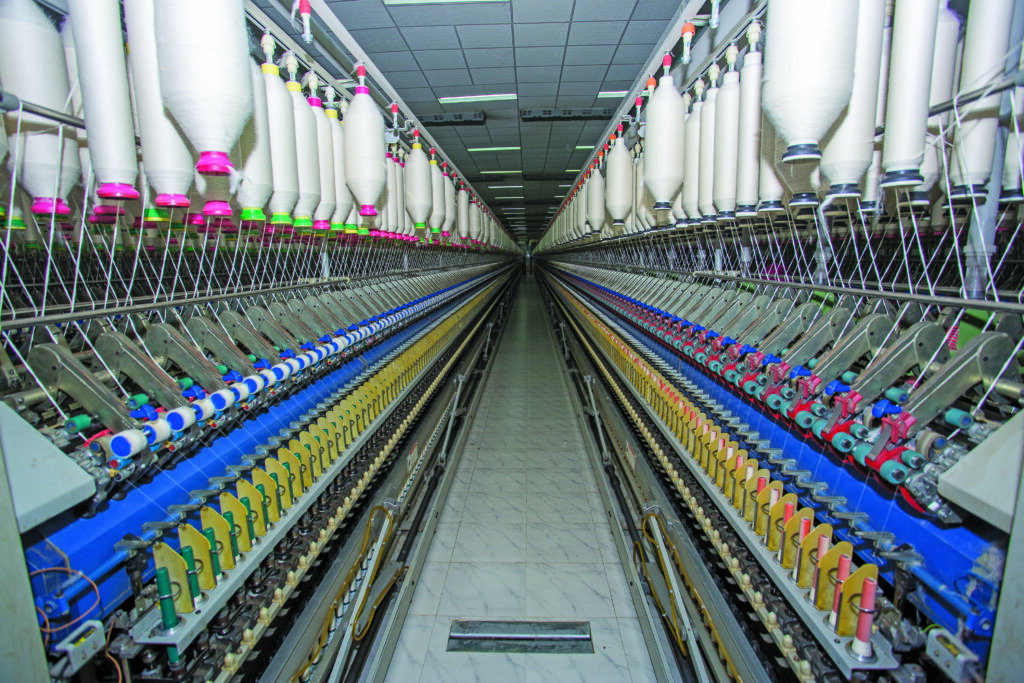Creating Yarns from Recycled Materials
Circular Economy & DBL
Background
The Textile industry is one of the most resource-consuming industries in the world. The extent is more within the Fabric Dyeing and Finishing operations, and sustainable-focused organisations are already taking effective measures to reduce water, energy, and other resources. However, when sustainability includes innovation, the processes can be significantly improved, even from the Spinning operation: which is the beginning of the supply chain. DBL Group’s Spinning Mill, Matin Spinning Mills PLC, is integrating a three-step process for creating special yarns: Innovate, Implement, and Inspire. We have a special focus on creating innovative yarns, that contribute to circular economy. Interventions here are impacting down within the supply chain, including even eliminating certain heavy resource consuming processes such as dyeing. DBL has even implemented a project which addresses the global plastic pollution challenge: making way for a sustainable fashion industry.
From Waste to Fashion
The Textile industry generates a significant amount of waste throughout the supply chain. However, it has been found that some of the non-hazardous waste is actually “raw material” for new products within the industry.
Contributing to Circular Economy, DBL has been working in creating innovative yarns using pre-consumer waste since 2012. A dedicated Yarn Development Team is present, which is constantly analyzing special fabrics and researching how the most suitable yarn can be produced. Sample swatches are also provided by our buyers and the Development Team works accordingly. Over 300 samples are created every month from these.
Our Spinning Mill makes use of different processes that reduce the consumption of cotton. Recycled textile materials are used instead of raw cotton, including wastes from:
- Blow Room in Spinning Mill
- Combing process in a spinning mill
- Cutting in the Garments
Manufacturing process
The yarns for loop and brush use reduce the consumption of raw materials by up to 60%. Up to 30% recycled materials can be used with virgin fibre to produce ornamented products known as Cotton Neppy Mélange yarns. Different colored neps (produced from recycled polyester) are visible in the yarn body and this works as ornamentation on the fabric surface. mixing of waste from the spinning mill’s Blow Room produces Snow yarns, which create a snow effect in the finished fabrics, which takes its place in the new fashion trade. Furthermore, in collaboration with the Forestry Stewardship Council (FSC), traceability is being introduced for the viscose used in the processes. The FSC promotes the responsible management of the world’s forests. In addition, under the Global Recycled Standard (GRS) certification, recycled polyester-blend yarn is being produced to create a variety of sustainable products.
Upon the announcement of the SDGs in 2015, DBL set an ambitious target for 2020 under SDG-12 to have 20% of our yarns made from recycled materials. By 2020, we generated 18%: had the target not been ambitious, we would not have reached this level. With H&M, we also worked on a project to use recycled plastic from pet bottles of Coca-Cola and mix the polyester created with virgin cotton. From 9,300 kg bottles, 30,560 kg cotton-polyester blended yarns were created, which in turn were used to create 164,171 cotton-polyester apparels products with 20% recycled polyester.
Impact
In 2022, we used about 890,000 kg of recycled cotton, saving 8,632,332,500 liters water in cotton fields, 32,040,000 MJ energy, 1,575,300 kg carbon emission, 35,333 kg waste and 81,880,000 liters of water from Dyeing process elimination.
In terms of scaling, there is significant demand for these materials now. We are scaling up operations to improve our capacity and have even started a new company to support circularity. DBL has invested in setting up a dedicated recycling business unit, DBL Textile Recycling Ltd, to expand the current recycling capacity of 2 tons/day to 6 tons/day. We will be expanding further in the coming years. This “Innovation in Yarn Production” has impact on cotton fields and even forward linkage processes by reducing or even eliminating Fabric Dyeing operations. In 2022, we used 890,000 kg of recycled cotton: which means saving 8,632,332,500 liters water in the cotton fields. Dyeing process elimination saved 32,040,000 MJ energy, 1,575,300 kg carbon emission, 35,333 kg waste and 81,880,000 liters of water.
Transformation 4.0 for Sustainability
DBL announced 2023 as a Year of Transformation and Development: by 2025, we will become a more sustainable business, keeping aligned with global requirements of all stakeholders. Our Transformation 4.0 Model has a core focus on Governance, Leadership Development, Energy Efficiency, and Textile Recycling. We will be expanding our current recycling capacity by including rejected apparels. We are even studying the impact on carbon emissions to contribute further towards the Paris Climate Agreement.

